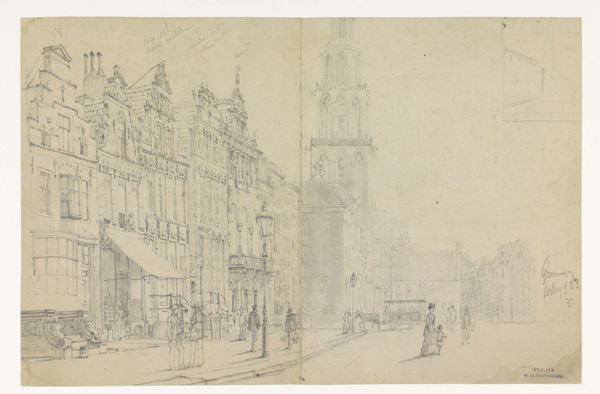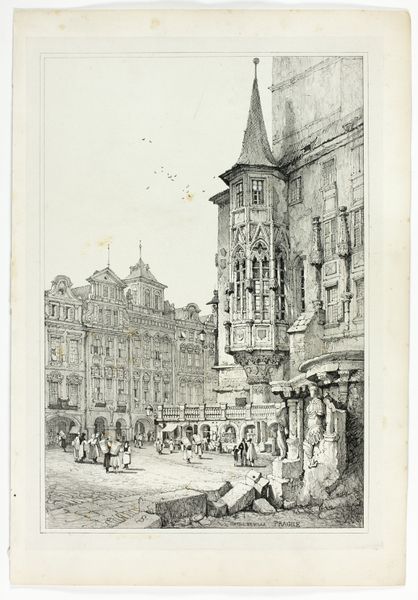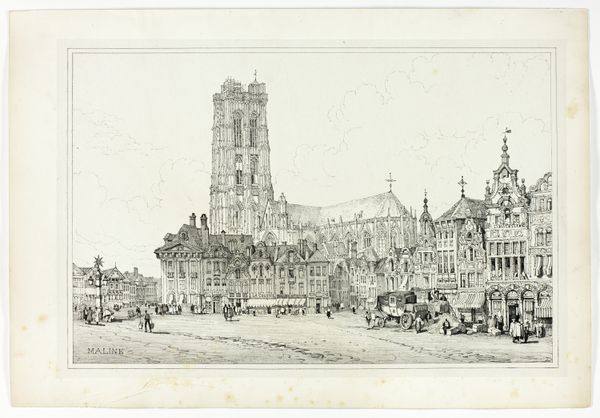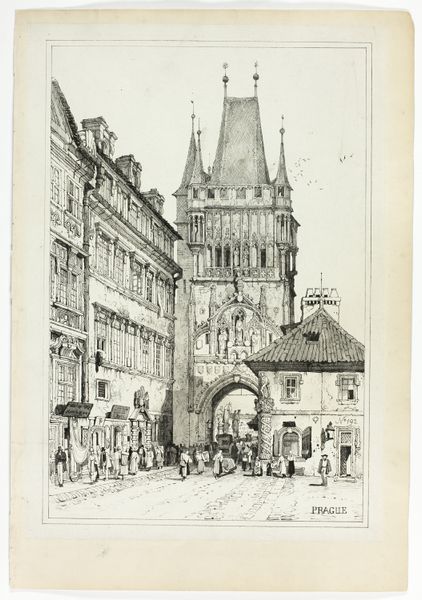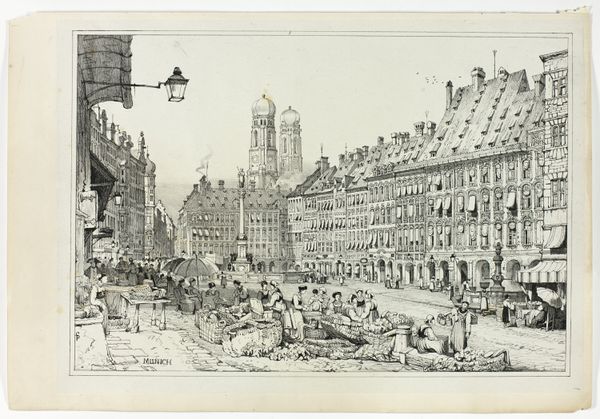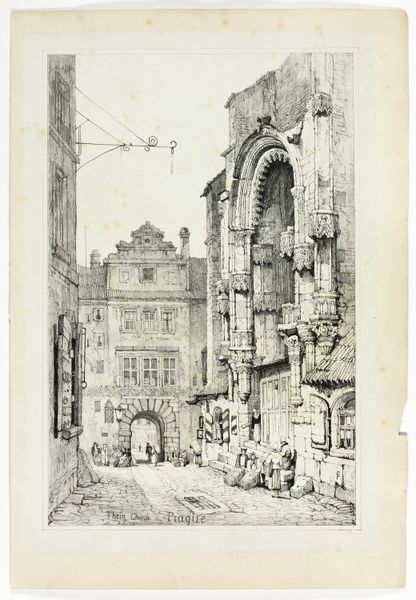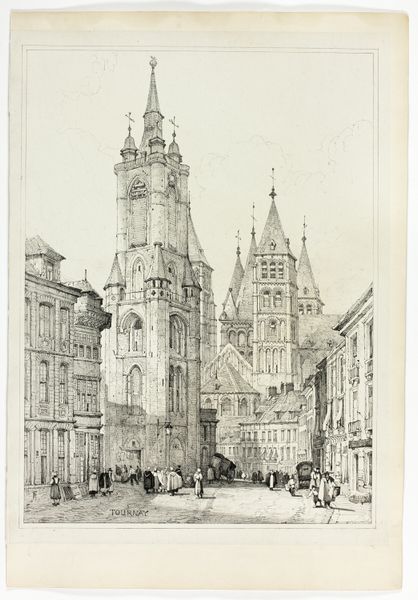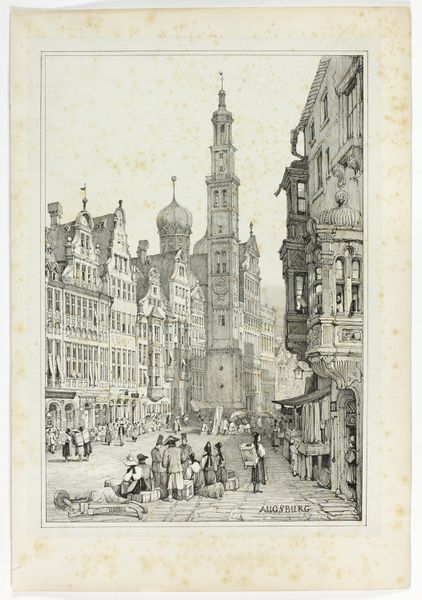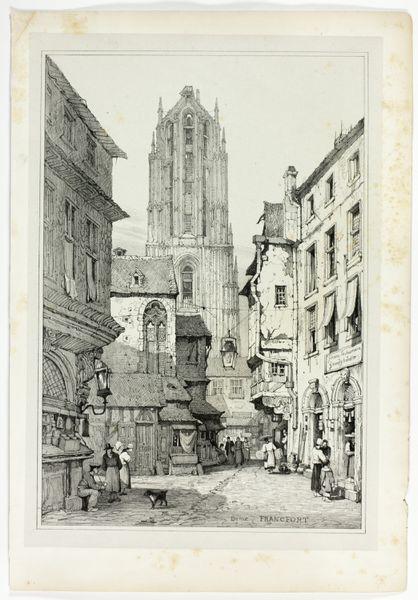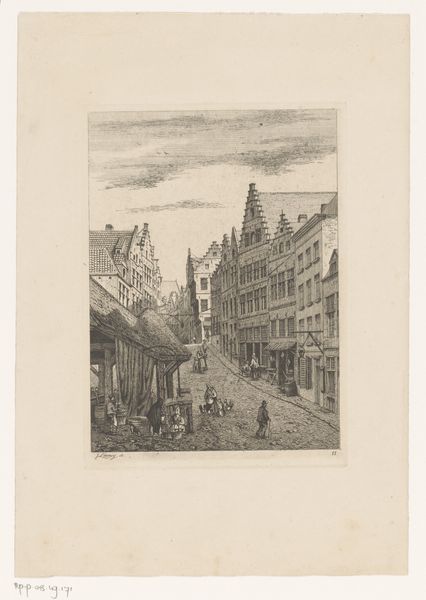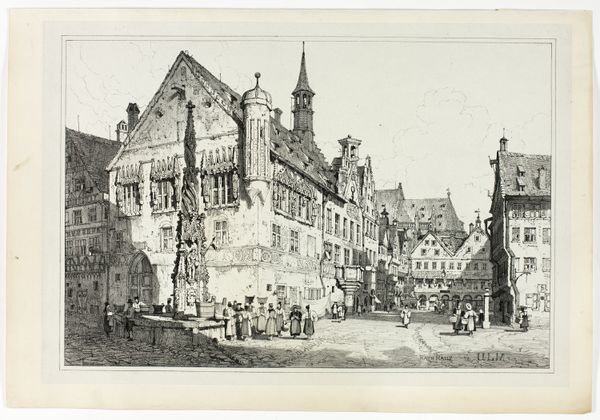
drawing, lithograph, print, etching, paper
#
drawing
#
lithograph
# print
#
etching
#
etching
#
paper
#
romanticism
#
cityscape
#
realism
Dimensions: 290 × 425 mm (image); 310 × 445 mm (primary support); 345 × 500 mm (secondary support)
Copyright: Public Domain
Editor: So this is "Prague," an 1833 print by Samuel Prout, combining lithography and etching. I’m struck by the contrast; the architecture feels monumental, but the everyday figures seem quite small in comparison. How do you read that interplay of scale? Curator: It's tempting to read that scale difference through a class lens. Consider that 1833 was a time of great social upheaval in Europe, with nascent capitalist forces shifting traditional power dynamics. Prout, as an artist catering to a bourgeois clientele, likely highlights the grandeur of established structures – literally looming – over the populace navigating new economic realities. The precision in rendering the buildings, versus the somewhat generalized depiction of the figures, further supports this interpretation. What do you think? Editor: That’s fascinating. So you’re suggesting the architectural detail isn't just aesthetic, but a symbolic assertion of power? Does Prout’s choice to use printmaking – a more accessible medium – complicate that interpretation? Curator: Absolutely, that's a crucial point! Printmaking allows for wider dissemination, potentially bringing images of power, but also glimpses into the lives of ordinary people, to a broader audience. Is Prout complicit in reinforcing the status quo or, perhaps, subtly documenting the tensions inherent in the changing social landscape? His own social position and artistic choices are inextricably linked to these questions. Does thinking about it this way change how you view the image? Editor: Definitely. It makes me think about the stories that aren’t being explicitly told here and whose perspectives are missing from this rendering of Prague. I see so much more depth now. Curator: Precisely. And it highlights the necessity of critically engaging with even seemingly straightforward cityscapes to understand the broader historical and social narratives at play. Editor: Thanks! It's shown me how important it is to examine artwork within broader conversations about culture, power and class, just like you said.
Comments
No comments
Be the first to comment and join the conversation on the ultimate creative platform.

